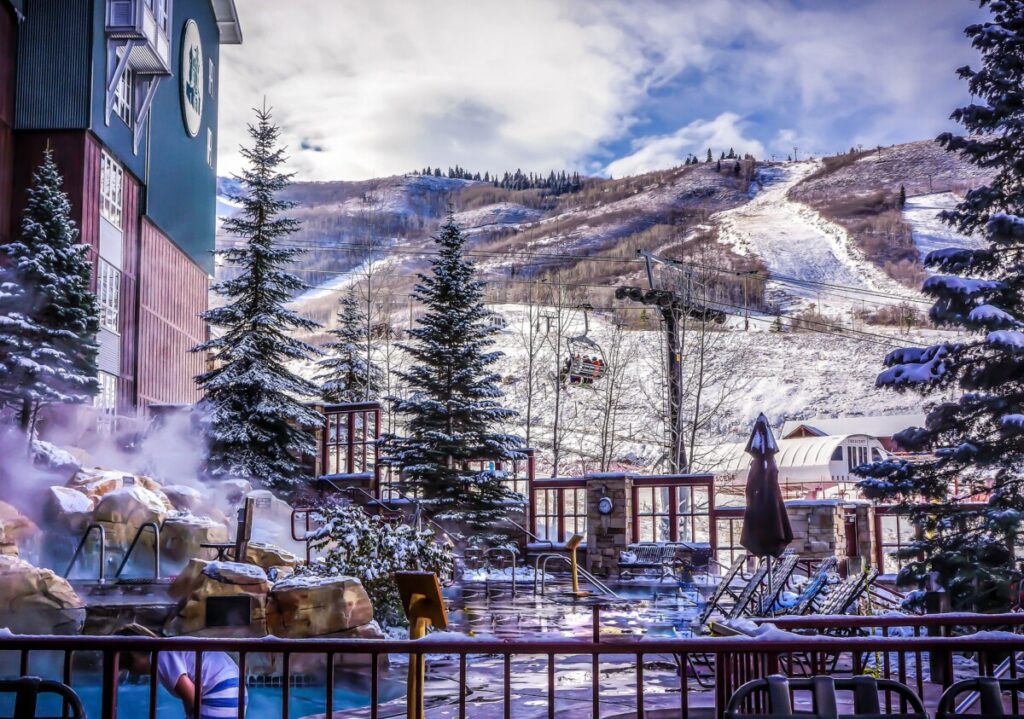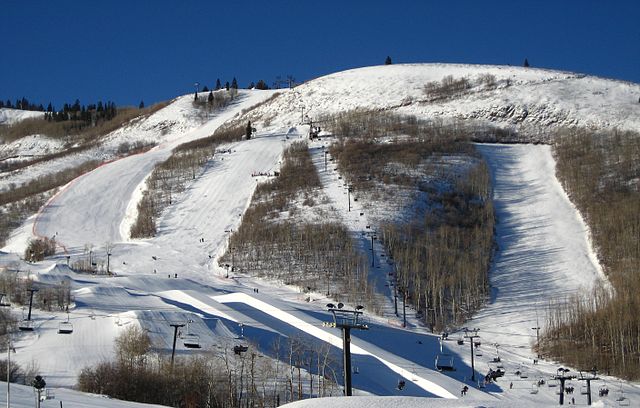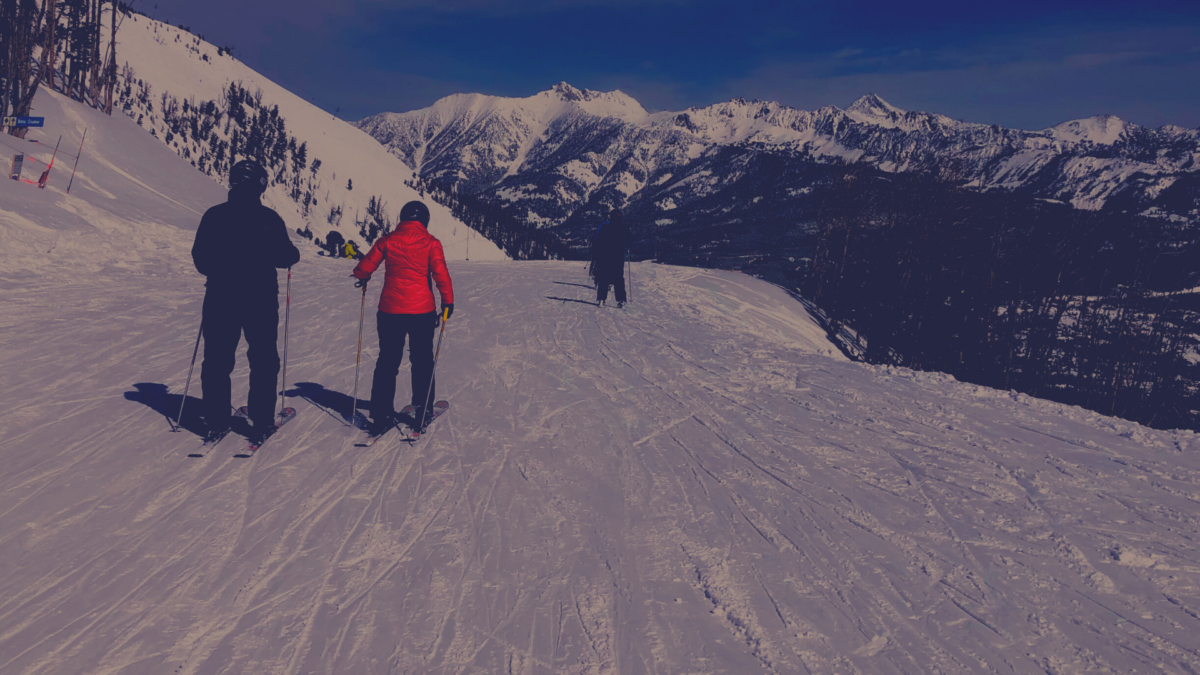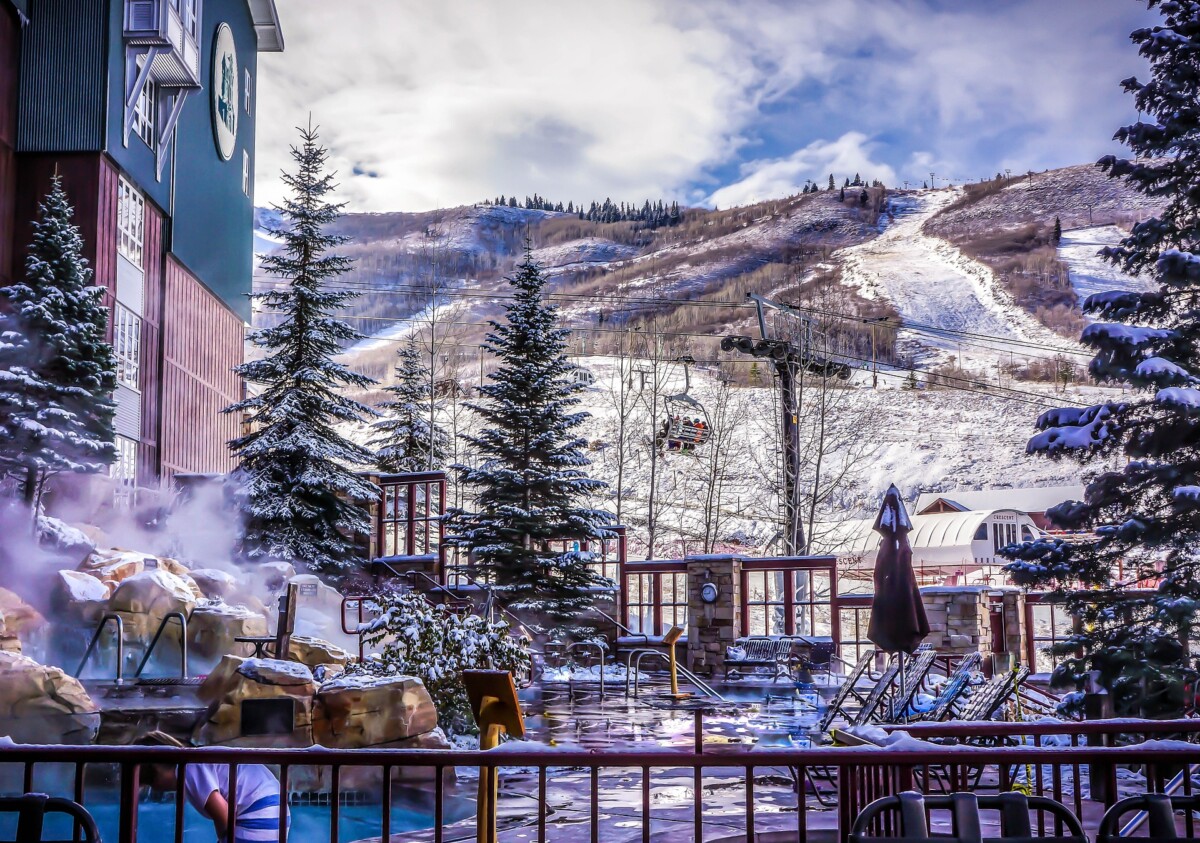Throughout history, ski resorts have been a popular destination for affluent families seeking recreational entertainment. Traditionally attracting visitors primarily for skiing, ski resorts have evolved significantly in the 20th century, with many pivoting towards offering a diverse range of winter activities and catering to families as a premier winter destination. With these developments, ski resorts have transformed into modern-day “ski cities,” providing a vast range of infrastructure and amenities that cater to a diverse subset of adventurous customers. Standing out as a leading example of these new “ski city” resorts is Park City Mountain Resort, located in rocky mountain Utah, with a rich history that spans over a century. This blog delves into Park City Mountain Resort’s journey towards becoming a premier “ski city” and explores the resort’s unique characteristics that have contributed to its success.

The Origin of Park City Mountain Resort
The origins of Park City Mountain Resort can be traced back to the silver mining boom that gripped the late 19th century. The town of Park City, nestled in the picturesque Wasatch Mountains of Utah, thrived as a bustling mining hub, with numerous silver mines dotting the landscape. By the late 19th century, Park City had become one of the largest silver mining towns in the world, producing more than $400 million worth of silver. With the introduction of the railroad in 1880, Park City’s population increased significantly. Over time Park City’s mining production began to decline and at the beginning of the early 20th century, the region began to face economic hardship. With this decline, Park City leadership sought to transition its economy to a more lucrative source.
Beginning in the 1960s, wealthy investors in Utah began seeking change. One of the key figures in the resort’s early years was Edgar Stern, a New Orleans businessman who purchased the resort in 1971 from United Park City Mines Company. Before the United Park City Mines Company acquired the resort, there were numerous owners; however, Edgar Stern was heavily responsible for establishing the resort as a leader in the space. Stern brought a new level of sophistication to the resort by investing in luxurious accommodations, high-end restaurants, and other amenities that attracted a more affluent clientele. The introduction of chairlifts revolutionized mountain access for visitors, and subsequent investments were made in ski infrastructure, including expanded ski runs, state-of-the-art lifts, and the establishment of snowmaking capabilities.
In 1996, Park City faced a new set of challenges when it was forced to close for an entire season due to a lack of snow. This event revealed to the management team the vulnerabilities of the resort’s business model when skiing was not available, prompting them to think beyond just being a ski destination. To address this issue, the management team began investing heavily in technological advancements and sustainable practices to combat the effects of unpredictable weather patterns. By implementing these new goals, Park City was able to make its snowmaking machines more energy-efficient, reducing their costs while minimizing their impact on the environment. These setbacks served as hallmark examples of the challenges that resorts face and why changes in the industry and the introduction of ski cities are transforming the dynamics of the space.
Over time the resort has invested in modern ski lifts, such as high-speed chairlifts and gondolas, to efficiently transport skiers and snowboarders to the majestic mountain peaks. Furthermore, the resort has expanded its terrain by adding new ski runs, terrain parks, and backcountry access to cater to all skill levels, from beginners to experts. Advanced snowmaking capabilities have also been introduced to ensure consistent snow coverage throughout the season, providing optimal skiing conditions even during periods of low natural snowfall. Over time the advancements in ski infrastructure at Park City elevated the resort to new high heights and offered a high-end experience to all different types of skiers. However, Park City Mountain Resort’s historic rise didn’t come without several challenges.
Several Challenges Along the Way
Throughout its history, Park City Mountain Resort has faced various challenges. In the 1980s, the resort encountered a significant conflict with the U.S. Forest Service regarding the lease of the land, which resulted in a lawsuit that lasted for over a decade. The legal battle centered around the use of the land, with the Forest Service threatening to terminate the resort’s lease due to a breach of contract. Park City disputed the allegations and filed a lawsuit that lasted several years until it was settled in 1998, with Park City agreeing to pay $12.5 million to renew the lease for another 40 years. In the 1990s, Park City was confronted with legal challenges regarding its environmental impact, specifically with a lawsuit over water usage. The resort was accused of overusing Utah’s water and was sued by the Sierra Club and the Utah Stream Access Coalition. The lawsuit was settled in 2006 when the resort agreed to reduce its water usage and implement measures to protect the environment. In 2011, Powdr Corporation, the resort’s previous owner, entered into a legal dispute with Talisker Corporation over the lease of the land. The conflict arose from the complex ownership structure of the mountain, where Talisker owned the land, but Powdr had been leasing it for several years. However, Powdr failed to renew its lease before the deadline, resulting in Talisker claiming that Powdr no longer had the right to operate on the land. This conflict led to a legal battle, and eventually, it was decided that the resort would be sold to Vail Resorts, marking a pivotal moment in the resort’s history.

Consistent Capital Investments & Aggressive Expansion
In 2014, Vail Resorts acquired Park City Mountain Resort from Powdr Corp for $182.5 million in cash. The purchase included the assets of Greater Park City Company, land used for ski terrain, and base parking lands approved for residential and commercial development. Under new management, this event marked a pivotal moment in the history of Park City. In a news release in 2014, Vail Resorts announced that they would be investing an additional $50 million in Park City Mountain Resort’s infrastructure. The funding would go towards improving the Interconnect Gondola, upgrading the King Con and Motherlode lifts at Park City, building a new snow hut restaurant, upgrading the summit house restaurant at Park City, expanding the Red Pine Lodge Restaurant at Canyons, and making other improvements to snowmaking and facilities. Along with investing capital into developing the resort, Vail merged Park City with neighboring Canyons Resort in 2015.
Canyons Resort, located in Park City, Utah, boasts a storied history spanning several decades marked by ownership changes and strategic investments. Originally established as Park West Resort in 1968, the property was acquired by American Skiing Company in 1997 and subsequently rebranded as “The Canyons.” Leslie B. Otten, a prominent American entrepreneur, founded the American Skiing Company. Before joining the company, Otten held executive positions at Cablevision, where he generated enough capital to invest heavily in the American Skiing Company alongside venture capitalists, including Bain Capital and the Blackstone Group. In 1997, the company went public and raised capital through various financial mechanisms, including stock issuance, bond offerings, bank loans, and revenue generation from its ski resorts.
Despite early success, the American Skiing Company faced financial struggles and filed for bankruptcy in 2007, leading to the sale of several ski resorts, including the Canyons, to other investors. In 2008, Talisker Corporation acquired the Canyons and invested $250 million in renovating, upgrading, and expanding the property, making it the largest ski resort in Utah. Then in 2014, Vail acquired the property and merged it with Park City Mountain Resort in 2015. This transaction marked another pivotal moment in the “ski city” history. After completing the deal, the resorts combined to form the largest ski and snowboard resort in the United States, featuring 7,300 acres of land and over 300 trails. Park City became the poster child for the “ski city” atmosphere.
With the influx of capital from Vail and the expansion of land using Canyon Resorts, Park City’s growth accelerated. Vail Resorts leveraged its ownership of the two resorts and their proximity to consolidate its resort offerings into one package. Furthermore, after Vail infused $50 million of capital and connected the two resorts, Park City began to embody the “ski city” identity. With large restaurants, top-of-the-line snowmaking, new constructions, and lodging available to visitors, Park City Mountain Resort’s development took a new turn. After reviewing these changes, it becomes clear that a key aspect of the “ski city” development is capital investment from outside sources. As we review Park City’s history, there are several occasions when wealthy investors chose to dedicate capital and sell the slopes. The movement of ownership, as well as a strategic investment in opportunities beyond snow, is a key component of Park City’s success. Along with advancements in infrastructure, the economics of the resorts have continued to change.
What the Investments in Infrastructure Mean for Park City
In an Atlantic article, Derek Thompson writes that the changing economics of ski resorts is based on the movement towards big ski resorts or “ski cities.” The ski industry is undergoing a transformation where bigger resorts are taking the lead, shifting towards creating environments that provide visitors with more entertainment activities to ensure more stable revenue streams. With a focus on diversifying activities, the economics of these resorts have continued to evolve into a winter experience rather than a singular activity such as skiing. In the past, lift tickets served as the primary source of income for these resorts. However, now the resorts are seeking additional revenue streams such as lodging, dining, and entertainment facilities to entice visitors to stay longer. This change presents several benefits from the traditional model, and “ski cities” pave the way for a more stable income flow and less dependence on unpredictable weather patterns. The resorts can optimize cash flows and have more capital to invest in ski infrastructure. The article illustrates Vail Resorts’ resort revenue as 9% dining, 11% other, 11% ski school, 23% Retail/Rental, and 46% tickets. As the ski industry transforms, it’s clear that diversification and offering more entertainment options beyond skiing will be key to success.
What Made Park City so Successful?
The success of Park City Mountain Resort as a world-class ski destination is a testament to its constant investment and aggressive expansion. This transformation from a declining mining town to a thriving resort was made possible through significant advancements in amenities, infrastructure, marketing, and sustainability. This article explores the key investors, such as the American Skiing Company and Edgar Stern, who played a pivotal role in funding the resort’s expansion, making it one of the most sought-after destinations for skiing enthusiasts. The resort has had to overcome numerous challenges, including legal battles with the U.S. Forest Service, environmental lawsuits, and weather-related setbacks. However, Park City Mountain Resort has emerged stronger and more sustainable thanks to its investments in critical infrastructure. The capital invested by key individuals and corporations has allowed the resort to continue expanding, offering a product that keeps customers engaged, and investors interested in reaping profits. It is clear that significant capital investment from different groups has been a critical factor in the resort’s success and is heavily responsible for its current position in the market.
Bibliography
“Canyons Resort.” Wikipedia. Last modified October 6, 2021. Accessed April 30, 2023. https://en.wikipedia.org/wiki/Canyons_Resort.
Corcoran, Brent. Park City under Foot. Signature Books, 1 Jan. 1995.
Elliott, Sally. Park City Museum. “Way We Were: A Brief History of Canyons Village.” Www.parkrecord.com. Accessed April 30, 2023. https://www.parkrecord.com/news/way-we-were-a-brief-history-of-canyons-village/.
Gordon, Kindra. “A Utah Success Story: Making Recreation & Agriculture Compatible.” Rangelands 26, no. 4 (2004): 29–31. Accessed April 26, 2023. http://www.jstor.org/stable/4001874.
Hand, Wayland D. “Folklore from Utah’s Silver Mining Camps.” The Journal of American Folklore 54, no. 213/214 (1941): 132–161. Accessed April 26, 2023. https://www.jstor.org/stable/535275.
Hengesbaugh, Mark. Creatures of Habitat. Logan, Utah State University Press, 2001.
Paskin, Janet. “The Ski Resort Fight over Park City Mountain.” Bloomberg.com, February 7, 2014. Accessed April 30, 2023. https://www.bloomberg.com/news/articles/2014-02-06/park-city-vail-resorts-powdr-fight-over-ski-mountains-future#xj4y7vzkg.
Payne, Caleb. “1963 to 1981: The Early Resort Years (Treasure Mountains, Park City West, Snow Park) – Ski Park City.” Ski Park City. Last modified March 7, 2018. Accessed April 30, 2023. https://skiparkcityutah.net/1963-to-1981-the-early-resort-years-treasure-mountains-park-city-west-snow-park/.
Shaffer, Stephan B. Out of the Dust: Utah’s Lost Mines and Hidden Treasures. Springville, Utah: Council Press, 2005.
Sturges, Philip C. “Utah Mining Folklore.” Western Folklore 18, no. 2 (April 1959): 137.
Thompson, Derek. “None.” The Atlantic. February 7, 2012. Last modified February 7, 2012. https://www.theatlantic.com/business/archive/2012/02/no-business-like-snow-business-the-economics-of-big-ski-resorts/252180/.
Volmer, Nancy, and Tom Roberts. “History of Park City, Utah.” Rangelands 14, no. 2 (1992): 60–62. Accessed April 26, 2023. http://www.jstor.org/stable/4000809.
“Park City Historic Timeline.” Park City Museum. https://parkcityhistory.org/park-city-historic-timeline/.
“Park City Mountain Resort: Top Ranked Utah Skiing | Park City Mountain Resort.” Parkcitymountain.com. Last modified 2020. https://www.parkcitymountain.com/.
“Utah Rich in Attractions.” Engineering Education News 10, no. 7 (1984): 4–4. Accessed April 26, 2023. http://www.jstor.org/stable/43886956.
“Vail Resorts Acquires Park City Mountain Resort in Park City, Utah | Vail Resorts, Inc.” Vail Resorts, Inc. Last modified 2014. https://investors.vailresorts.com/news-releases/news-release-details/vail-resorts-acquires-park-city-mountain-resort-park-city-utah.
“Vail Resorts to Invest an Unprecedented $50 Million in Park City Mountain Resort in One Season and Create the Largest Ski Resort in the U.S. | Vail Resorts, Inc.” Vail Resorts, Inc. Last modified 2014. Accessed April 26, 2023. https://investors.vailresorts.com/news-releases/news-release-details/vail-resorts-invest-unprecedented-50-million-park-city-mountain.

